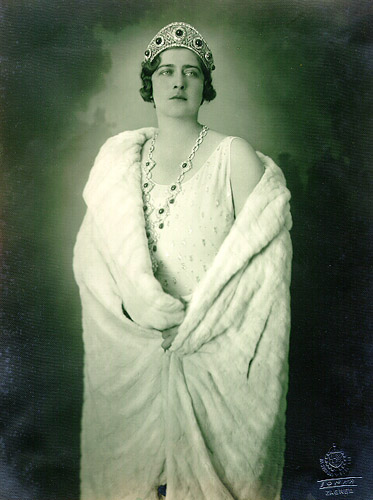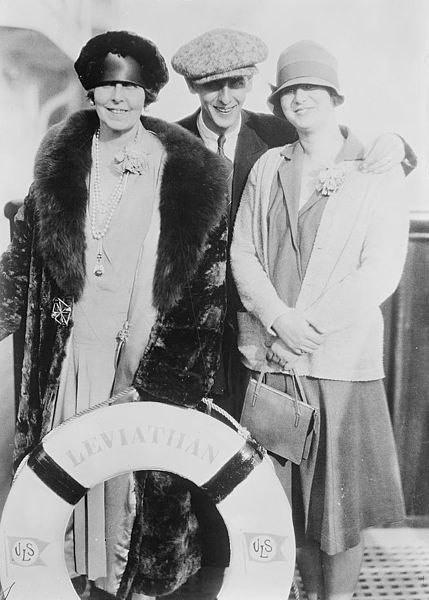by Scott Mehl © Unofficial Royalty 2014

Margareta, Custodian of the Crown of Romania; Credit – Wikipedia
Margareta, Custodian of the Crown of Romania is the eldest of the five daughters of King Mihai I of Romania and Princess Anne of Bourbon-Parma. She has claimed the headship of the House of Romania since her father’s death on December 5, 2017. Margareta was born on March 26, 1949, in Lausanne, Switzerland, where her father was living in exile. Her parents had met in London during the festivities of the wedding of Queen Elizabeth II and The Duke of Edinburgh in 1947 and married the following year. The Duke of Edinburgh was one of Margareta’s godparents.
Margareta has four younger sisters:
- Princess Elena of Romania (born 1950), married (1) Robin Medforth-Mills, had two children, divorced (2) Alexander McAteer, no children
- Princess Irina of Romania (born 1953), married (1) John Kreuger, had two children, divorced (2) John Wesley Walker, no children; In 2013, Irina was stripped of her title, styles and rights to the throne following involvement with illegal cockfighting and arrest. She was restored to her original royal style and title by her elder sister Margareta, Custodian of the Crown of Romania, in August 2020.
- Princess Sophie of Romania (born 1957), married and divorced Alain Michel Biarneix, had one daughter
- Princess Marie of Romania (born 1964), married and divorced Kazimierz Wiesław Mystkowski
Following her primary and secondary education in Switzerland, Margareta had planned to attend the Ecole des Beaux-Artes in Paris, France. However, she was persuaded to first spend a year in Florence with her grandmother, Princess Helen of Greece and Denmark, during which she decided to pursue a more academic education. She attended and graduated from the University of Edinburgh in Scotland. While a student at Edinburgh, she was romantically involved with the future British Prime Minister Gordon Brown.
Following university, Margareta worked with several universities, specializing in public health policy and medical sociology. She then worked with the World Health Organization, the Food and Agriculture Organization of the United Nations, and the UN’s International Fund for Agricultural Development. In 1989, she returned to Switzerland to work with her father and causes relating to Romania. In 1990, she established The Princess Margareta of Romania Foundation to foster and support civil society in Romania.

Margareta and Radu Duda on their wedding day Photo: Royal Order of Sartorial Splendor
In 1994, through The Princess Margareta of Romania Foundation, Margareta met her future husband, Radu Duda. He was the director of an art therapy program for orphans supported by Margareta’s foundation. They were married on September 21, 1996, in Lausanne, Switzerland. The couple has no children and resides at the Elisabeta Palace in Bucharest, Romania.
During the time of the Romanian monarchy, succession to the throne was limited to males, and therefore, Margareta and her sisters were not eligible to succeed. However, in December 2007, King Mihai made changes to the house laws to ensure the succession of the current family. He established the Fundamental Rules of the Royal Family of Romania, changing the line of succession to allow his daughters to succeed. Princess Margareta was named as Crown Princess and Custodian of the Romanian Crown, and his heir as Head of the House of Romania. King Mihai also requested that if the monarchy was ever restored, equal primogeniture be used for the line of succession. Following her father’s death in December 2017, Margareta became Head of the House of Romania and is formally styled as Her Majesty Margareta, Custodian of the Romanian Crown.
Embed from Getty Images
Margareta and her husband at the funeral of Grand Duke Jean of Luxembourg in 2019
This article is the intellectual property of Unofficial Royalty and is NOT TO BE COPIED, EDITED, OR POSTED IN ANY FORM ON ANOTHER WEBSITE under any circumstances. It is permissible to use a link that directs to Unofficial Royalty.
Romania Resources at Unofficial Royalty


















